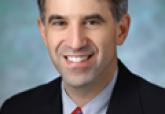Conference Coverage


NATIONAL HARBOR, MD—Clinicians often make “poor treatment choices” when presented with a patient with infantile spasms, said W. Donald Shields, MD, Past President of the Child Neurology Foundation and Emeritus Professor of Neurology and Pediatrics at the University of California, Los Angeles. “Some people think that the best way to go is to start with the dose low, but this is one where you make the diagnosis and you nuke it,” he said at the 2015 Child Neurology Society Annual Meeting. “You want to get to therapeutic levels as fast as you possibly can.”
Left untreated, infantile spasms can lead to serious outcomes, including an estimated infant mortality rate of between 5% and 6%. The most significant concern, however, is that infantile spasms are associated with autism and intellectual deficits that permanently affect quality of life. These outcomes are modifiable, said Dr. Shields.
In a 2004 study of long-term outcomes in cryptogenic infantile spasms, 100% of children seen within one month of parents’ recognition of the spasm developed IQs in the normal range, said Dr. Shields. When patients were treated later, less than 40% of them had good outcomes. Treatment is more likely to provide a sustained response if implemented within three weeks after the spasm, he explained.
“A huge challenge is that we have to get the child into effective treatment quickly,” said James Wheless, MD, Chief of Pediatric Neurology at the University of Tennessee Health Science Center, and Director of the Le Bonheur Comprehensive Epilepsy Program and the Neuroscience Institute at Le Bonheur Children’s Hospital in Memphis.
This goal is often difficult to achieve because of a lack of consensus on the best therapy, and treatment practices vary greatly by location, said Dr. Wheless. “Not all drugs are approved everywhere.” In Japan, only zonisamide is approved for the treatment of infantile spasms, while in the United States, vigabatrin and adrenocorticotropic hormone (ACTH) are the only agents with FDA approval.
Lack of Evidence-Based Medicine
These inconsistencies have contributed to a scarcity of data from evidence-based sources. “We have a lot of variation in treatment here, for different countries, which speaks to the fact that we need better data to review and [a better understanding] of the regulatory statutes that affect them,” said Dr. Wheless.
In recommendations published in 2006, the International League Against Epilepsy (ILAE) considered the data too limited to develop guidelines for infantile spasms, Dr. Wheless said. As late as 2013, “again, the data were not strong enough to make guidelines, so [the ILAE] made recommendations,” he observed. Level B evidence indicated that ACTH is preferable for short-term spasm control, and Level C evidence suggested that corticosteroids are probably effective for short-term spasm control. Updates to the recommendations in 2008 and 2013 indicated that vigabatrin is effective in the short term, especially in the treatment of tuberous sclerosis complex. “Treatment with ACTH or [an] oral steroid is better in the long term, especially in cases with no known etiology,” said Dr. Wheless.
Further review of the data revealed little evidence that one particular treatment was optimal, although high-dose ACTH was found to be more effective than prednisone. In the 2008 update, ACTH also was considered more effective than vigabatrin. The authors found that a high dose of prednisone was preferred to a low dose.
Goals of Therapy
Although neurologists have no clear guidelines on the best therapies for infantile spasms, clear indications about the best strategies have emerged. Neurologists should treat infantile spasms as an encephalopathic disorder that visually manifests on EEG, said Drs. Shields and Wheless. “We need to not only control the spasms, but we have to improve the EEG, because the EEG is the harbinger for the development of continuing problems,” added Dr. Wheless.
Regardless of the initial agent used, the goals of therapy for symptomatic infantile spasms are to treat early, to treat effectively with a known agent with demonstrated efficacy, and to try a second therapy if the first is not effective. “You really have to be using effective therapies,” Dr. Wheless said. Several studies indicate that high-dose protocols of drugs, including prednisone, vigabatrin, and particularly ACTH, produce better outcomes. “All ACTH studies showed a dose response,” said Dr. Wheless.
The American Academy of Neurology and Child Neurology Society reviewed 14 studies of ACTH therapy. Across those studies, high-dose ACTH treatment was associated with remission rates for infantile spasms estimated at 90% over two months. “High dose is where we get our bang for our buck,” said Dr. Wheless.
